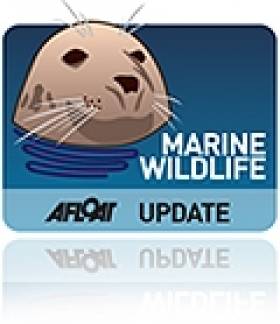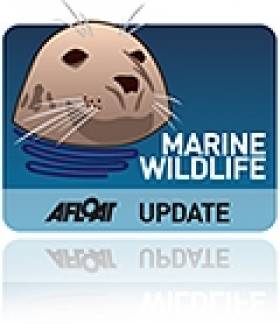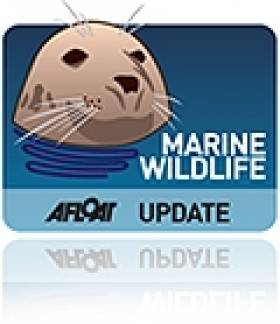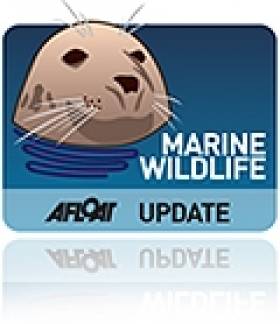Displaying items by tag: marine wildlife
Sea Power Projects Could Be Good for Marine Wildlife Says Report
#POWER FROM THE SEA - Marine-based renewable energy projects could be introduced without a damaging impact on marine wildlife, according to a new briefing paper from Friends of the Earth.
Business Green reports on the paper from the environmental campaign group, written by marine ecologist Martin Attrill of Plymouth University's Marine Institute, which draws together research on the biodiversity impact of offshore wave energy, tidal energy and wind power schemes.
Attrill found that the deployment of sea energy arrays could ultimately benefit many marine species by reducing the effects of fishing activity, and even acting as reefs to attract new sea life.
He cites the example of a grey seal colony in Strangford Lough that has steered clear of a nearby tidal turbine over the three years of its operation in the lough.
However, Business Green says the report makes clear that the deployment of such projects "must be done sensitively", noting that any negative impact on biodiversity "would be significantly lower than the damage done to marine wildlife by rising sea levels caused by climate change".
Business Green has more on the story HERE.
Twitter Fears Unfounded as Dingle's Fungie is Alive and Flipping
#FUNGIE - He was the subject of rumours of his demise earlier this week - but the people of Dingle say their most famous resident, Fungie the dolphin, is alive and flipping.
A spokeswoman for Dingle Dolphin Boat Tours confirmed to The Daily Edge that Fungie is "definitely alive", and that no dolphin remains had washed up on the beach, as had been claimed on Twitter last Monday morning.
The Co Kerry fishing village is celebrating 30 years of the bottlenose dolphin's residency in its harbour. It's unclear exactly how old Fungie is, but it's presumed he was born in the mid 1970s.
Irish Central has more on the story HERE.
Lobster Skirmish Caught On Video
#MARINE WILDLIFE - For something a little unusual on this Bank Holiday Monday, check out this video of lobsters locked in a duel beneath the waves in Co Donegal.
This clash of crustaceans was captured on video by the Sheephaven Sub Aqua Club earlier this month at Mulroy Bay near Letterkenny.
Thirty Years of Fungie's Frolics in Dingle
#FUNGIE - A new video posted to YouTube celebrates 30 years of Fungie the dolphin in Dingle.
The male bottlenose dolphin appeared from out of nowhere in the Co Kerry fishing village in 1983 and soon made it his home, quickly becoming an integral part of the local community.
Since his arrival Fungie has made friends and warmed hearts with people both local and across the world, such as Dutch couple Jeannine Masset and Rudi Schamhart who have been meeting him for more than 20 years.
Meanwhile, locals hope that new measures for harbour users proposed earlier this year won't bring an end to boat trips to meet Dingle's most famous resident.
One Week Left to Catch 'Shark Week' at Sea Life Bray
#MARINE WILDLIFE - There's still a week left to check out the Shark Week celebrations at Sea Life Bray.
Till 4 November the centre on the promenade in Bray, Co Wicklow will be hosting events that take a closer look at one of nature's most magnificent but misunderstood creatures.
In an urgent bid for shark conservation, Sea Life is supporting the UK-based Shark Trust by throwing the spotlight on sharks - raising awareness about the wide range of shark species in British and Irish waters, and the challenges they and other marine wildlife are facing.
Kids can get involved with badge making, puzzles and games, shark-related quizzes and activity sheets, and even see the centre's sharks - which include bonnet head shark, leopard shark and blacktop reef shark - get their dinner at the shark feeding times!
The full timetable for Shark Week related events at Sea Life Bray is available HERE.
Conference Calls On UK Govt to 'Save Our Irish Sea'
#MARINE WILDLIFE - Marine experts are calling on the UK public to pile pressure on their government to create Marine Conservation Zones (MCZs) to help protect and restore marine wildlife in the Irish Sea and around the British coast.
The Living Seas North West Conference in Cumbria recently was a call to arms for marine experts and the public to join forces to protect the oceans.
And organisers the North West Wildlife Trusts used the event to press support for nature reserves in the Irish Sea as part of a UK-wide campaign by The Wildlife Trusts for 127 MCZs around the United Kingdom.
Callum Roberts, Professor of Marine Conservation at the University of York, described areas off the Isle of Man which have never been dredged as “carpeted with life”.
He said: “In the 19th century the Irish Sea bed was crusted with oysters. Today it is not just a sea different in the quantity of the wildlife it is different in the quality of the habitats in which that wildlife lives.”
Prof Roberts described how a study showed that dredging to catch 28,000 prawns also caught 12,000 other fish, most of which were thrown away. He also spoke of dives where he has seen the seabed damaged in huge areas by trawling.
“Over-fishing is not the only thing going on in the oceans," he said, "they are also affected by climate change and pollution. Our seas are changing faster than at any other time in human history.”
Prof Roberts said he was not against fishing, but that conservationists and the fishing industry need to find some common ground. “The prosperity of wildlife and the fishing industry depend on it," he said.
Meanwhile, The Wildlife Trusts marine protected areas manager Richard White spoke about the problems caused "by all the things that human activity is doing wrong".
He added: "We are trying to increase the resilience of our marine wildlife. The critical part is that we are doing this by trying to create Marine Conservation Zones.”
Pollution was highlighted by TV star and diver Paul Rose and Caroline Salthouse of the North West Coastal Forum.
“A huge problem is ocean debris," said Rose. "In 43 years of diving I am beginning to see more plastic and less fish. It is an issue that we must use to get people engaged in what is going on in our seas.”
Salthouse called for the public not only to sign the Wildlife Trusts’ new 'Petition Fish', but also to write to the British government as individuals.
More details about the Marine Conservation Zones and Petition Fish can be found at www.wildlifetrusts.org/living-seas
Pacific Beluga Whale Has a Donegal Accent
#MARINE WILDLIFE - US marine science experts have been baffled by a beluga whale whose speech-like vocalisations sound an awful lot like Donegal Irish!
BBC News reports on research out of San Diego into the sounds made by a nine-year-old whale named NOC, who surprised his investigators by spontaneously mimicking what seems like human speech.
Dolphins have been taught to mimic the sounds of human speech before, but no marine wildlife had been previously recorded ever doing so on their own - though beluga whales already have a reputation as the 'canaries of the sea' for their chatty high-pitched calls.
"Our observations suggest that the whale had to modify its vocal mechanics in order to make the speech-like sounds," said Sam Ridgway, president of the National Marine Mammal Foundation and lead author on the research paper.
"The sounds we heard were clearly an example of vocal learning by the white whale."
BBC News has more on the story HERE - including audio of the beluga whale's 'speech'.
Baltimore Whale Remains Dumped At Sea
#MARINE WILDLIFE - The carcass of the fin whale that died after being trapped in Baltimore Harbour two months ago has been towed out to sea after its presence in a conservation area attracted complaints.
According to the Irish Examiner, disappointment has been expressed by a local group in Baltimore who hoped to salvage the skeleton of the 65ft female fin whale, the remains of which have now been towed out beyond Fastnet Rock for disposal.
Last week Afloat.ie reported on claims from local resident Tom McCarthy, among others from the Schull area, that the whale carcass was creating a "rancid oil slick" with a "horrendous smell" in Roaringwater Bay, a Special Area of Conservation for marine wildlife that houses a grey seal breeding ground.
However, the Irish Whale and Dolphin Group (IWDG) - which was working with Baltimore residents on their plan to retrieve the bones with a view to displaying the skeleton in the town - criticised the decision by Cork County Council to dump the remains.
IWDG sightings co-ordinator Pádraig Whooley pointed the finger at "vested interests" exaggerating claims about health hazards, arguing that "towing it out to sea raises the very real possibility that [it] could simply wash up on the coast again."
The Irish Examiner has more on the story HERE.
Rare Finds in 25th Anniversary Coastwatch Survey
#COASTAL NOTES - The remains of a leatherback turtle were among the finds reported by 'citizen scientists' taking part in the Coastwatch survey of Ireland's coastline, according to The Irish Times.
As previously reported on Afloat.ie, the 'eco audit' marked the 25th anniversary of the first nationwide Coastwatch survey, taking in use of land and shore, quality of inflow water, waste and pollution, and selected coastal and marine wildlife and plantlife.
The survey period concluded at the weekend with an event at the new Tralee Bay Wetlands centre attended by Minister for Heritage Jimmy Deenihan, close to one of the rare discoveries by survey volunteers in the shape of honeycomb worm reefs.
The Irish Times has more on the story HERE.
Baltimore Whale Carcass Creating 'Rancid Oil Slick' in Conservation Area
#BALTIMORE WHALE - Nine weeks after the tragic demise of the Baltimore Harbour fin whale, its carcass is still afloat off West Cork, creating a “rancid oil slick” in a special conservation area, according to a local resident.
Tom McCarthy contacted Afloat.ie with the above image of the 65ft whale carcass, which was towed out to the grey seal breeding ground off the Carthys Islands in Roaringwater Bay and has apparently been left to rot.
“It has been left here since the middle of August to decay,” says Tom. “The rancid oil slick is clearly visible and extends for over 1km on relatively still days, the smell is horrendous."
As previously reported on Afloat.ie, plans were afoot to sink the fin whale carcass that was trapped in Baltimore Harbour in mid-August and endured a harrowing few days trapped in Baltimore Harbour before it died from what's presumed to be a combination of illness and injury.
Tom McCarthy claims that the National Parks and Wildlife Service (NPWS) has washed its hands of the situation, considering the enormous marine mammal carcass to be a natural occurrence "even though the animal beached and died several miles [away and] was wrapped in a net and towed to its final resting position".
The location is in a Special Area of Conservation - yet according to Tom, no risk assessment appears to have been carried out beforehand.
"Ten minutes on the internet would show that whales are perhaps the most contaminated animals in the world," he says. "Their blubber is contaminated with persistent organic compounds such as PCBs, DDT, dioxins, etc and the internal organs such as the liver and kidneys are 'high', 'very high' or 'staggeringly high' in mercury, cadmium, chromium, etc.
"Some beached whales are found to be so contaminated the whale itself has to be considered as hazardous waste and disposed of as such."
Tom notes that the area is fished extensively for shrimp, crab, lobster and pollock, and that the rotting carcass is in close proximity to several mussel farms.
"It seems inevitable that as the whale continues to decay and is eaten whatever contaminants were present prior to death will re-enter the food chain."
He compares the current situation to a similar whale carcass disposal in Sligo last year, where the flesh was cut off and sent for incineration while the bones were marked for later skeletal recreation and sent for composting.
Regarding the West Cork whale carcass, Tom says: "Some estimates say it will take three years for the whale to completely decay."
Tom adds that he has been in contact with Cork County Council and hopes to hear on Monday about plans for a more appropriate method of disposal for the whale carcass.







































































